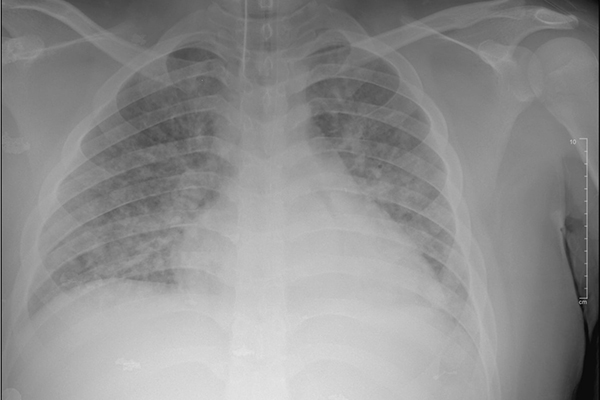Keywords
Abstract
Severe leptospirosis is associated with excessive proinflammatory and anti-inflammatory cytokines that lead to multiorgan failure. Oxiris® haemofilter is a blood purification therapy that can be utilized to control these inflammatory responses during early phase of sepsis-associated acute kidney injury (AKI) that requires renal
replacement therapy. We present a case of a 15-year-old male with severe leptospirosis with multiorgan involvement who was admitted to our intensive care unit (ICU). He had septic shock with myocarditis, respiratory failure, AKI with metabolic acidosis, and transaminitis. We started him on continuous veno-venous haemofiltration with the Oxiris haemofilter for metabolic acidosis and cytokine absorption for a total duration of 35 hours. A rapid decrease of vasopressor requirement, lactate, and procalcitonin levels was observed following therapy initiation. He was extubated on day 5 of ICU admission and discharged well to the general ward after 7 days in the ICU. This case highlights the potential benefits of the Oxiris haemofilter as an adjunct in the management of septic shock in severe leptospirosis with multiorgan involvement. Randomized clinical trials are warranted to validate the clinical benefits of this therapy.
References
Abdul Wahab Z. Epidemiology and Current Situation of Leptospirosis in Malaysia Ministry of Health Malaysia. [Internet]. Persidangan Kesihatan Persekitaran Pihak Berkuasa Tempatan 2015. [cited 2022 December 20]. Available from: https://jkt.kpkt.gov.my/jkt/resources/PDF/Persidangan_2015/persidangan%20kesihatan/Leptospirosis_in_Malaysia.pdf
Philip N, Lung Than LT, Shah AM, Yuhana MY, Sekawi Z, Neela VK. Predictors of severe leptospirosis: a multicentre observational study from Central Malaysia. BMC Infect Dis. 2021;Dec 1;21(1).1081. https://doi.org/10.1186/s12879-021-06766-5
Reis EA, Hagan JE, Ribeiro GS, et al. Cytokine Response Signatures in Disease Progression and Development of Severe Clinical Outcomes for Leptospirosis. PLoS Negl Trop Dis. 2013;7(9). https://doi.org/10.1371/journal.pntd.0002457
Zhang L, Feng Y, Fu P. Blood purification for sepsis: An overview. Precis Clin Med. 2021 Feb 25;4(1):45-55. https://doi.org/10.1093/pcmedi/pbab005
Pickkers P, Vassiliou T, Liguts V, et al. Sepsis management with a blood purification membrane: European experience. Blood Purif. 2019 Apr 1;47(Suppl3):36–44. https://doi.org/10.1159/000499355
Ferreira FL, Bota DP, Bross A, Mélot C, Vincent JL. Serial Evaluation of the SOFA Score to Predict Outcome in Critically Ill Patients. JAMA. 2001 Oct 10;286(14):1754–1758. https://doi.org/10.1001/jama.286.14.1754
Broman ME, Hansson F, Vincent JL, Bodelsson M. Endotoxin and cytokine reducing properties of the oXiris membrane in patients with septic shock: A randomized crossover double-blind study. PLoS One. 2019 Aug 1;14(8). https://doi.org/10.1371/journal.pone.0220444
Venet F, Monneret G. Advances in the understanding and treatment of sepsis-induced immunosuppression. Nat Rev Nephrol. 2018 Feb;14(2):121-137. https://doi.org/10.1038/nrneph.2017.165
Shum HP, Chan KC, Kwan MC, Yan WW. Application of endotoxin and cytokine adsorption haemofilter in septic acute kidney injury due to Gram-negative bacterial infection. Hong Kong Med J. 2013 Dec;19(6):491–497. https://doi.org/10.12809/hkmj133910
Evans L, Rhodes A, Alhazzani W, Antonelli M, Coopersmith CM, French C, et al. Surviving sepsis campaign: international guidelines for management of sepsis and septic shock 2021. Intensive Care Med. 2021 Nov 1;47(11):1181–247. https://doi.org/10.1007/s00134-021-06506-y






